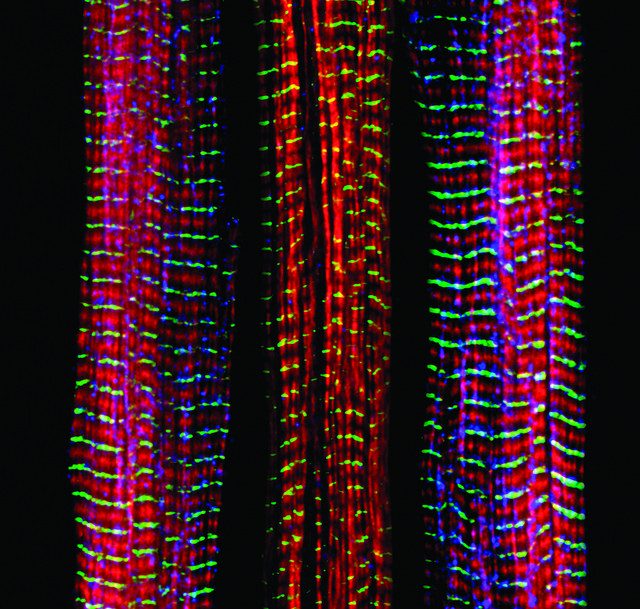For the first time, scientists have succeeded in triggering skeletal muscle contraction using pulses of light. This shows exciting promise in potential paralysis treatments. Recently, researchers from the University of Bonn have demonstrated the use of light to stimulate the opening [and closing] of a mouse’s voice box or larynx (download the short video here).
The method is based on a technique called optogenetics, where nerve cells are genetically modified to incorporate a gene that makes them respond to light1. This allows scientists to mimic the effects of a nerve impulse by shining light on the modified cells. Optogenetics is currently used to study the transmission of signals in the nervous system, but this new approach highlights a potential medical use for the technology.
Philipp Sasse and his team at the University of Bonn have used optogenetics in muscle cells, and shown that muscle fibres isolated from their genetically modified mice contract when exposed to light2. In the intact muscle, the light pulses caused sustained contraction and opening of the larynx (see the video below). The group also demonstrated the potential of this as a treatment by successfully transferring the necessary gene into the muscle of a normal mouse. This could be achieved in humans through existing gene therapy technology.
The researchers opted to study the larynx as they recognized that optogenetics held the potential to allow a treatment for laryngeal paralysis to be developed. This condition most commonly occurs due to nerve damage following injury, surgery or stroke, and can cause difficulty speaking, breathing and swallowing. Using light instead of electrical stimulation (which is already used to treat some forms of paralysis) allows much greater precision in the area to be stimulated. This is particularly important in areas like the larynx, where the muscles that control opening and closing are situated very close to each other.
Once the technique is refined, optogenetic muscle stimulation could be used to treat a range of disorders caused by a breakdown of communication from the nerves to the muscles. It also provides a new way of studying detailed features of muscle contraction, and so will be a useful tool in future research.
Edited by Debbie Nicol
References
- Williams, S. C. P., Deisseroth, K. Optogenetics. Proceedings of the National Academy of Sciences of the United States of America. 2013; 110(41):16287
- Bruegmann, T., Bremen, T., Vogt, C. C., Send, T., Fleischmann, B. K., Sasse, P. Optogenetic control of contractile function in skeletal muscle. Nature Communications. 2015; 6:7153.

